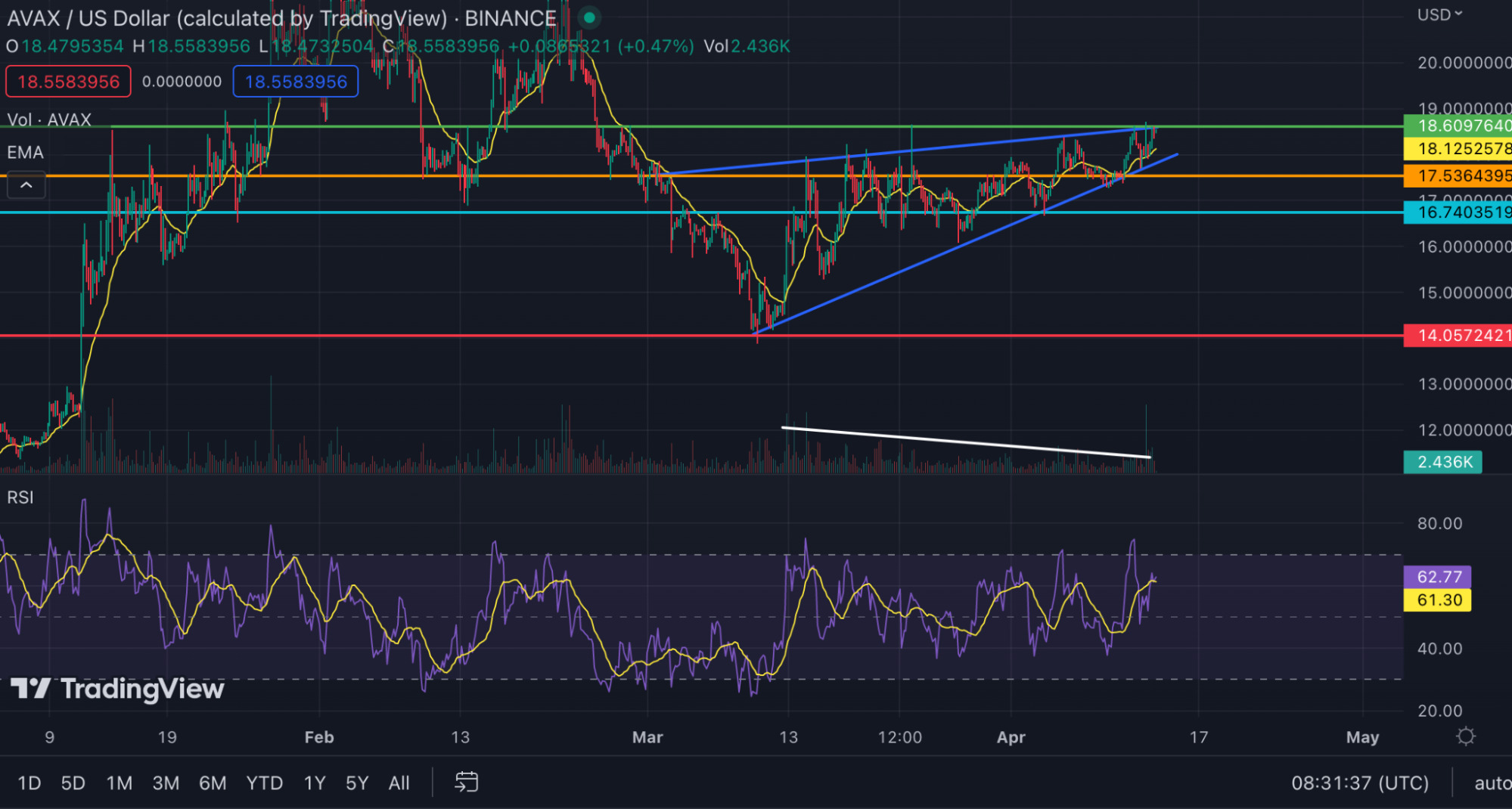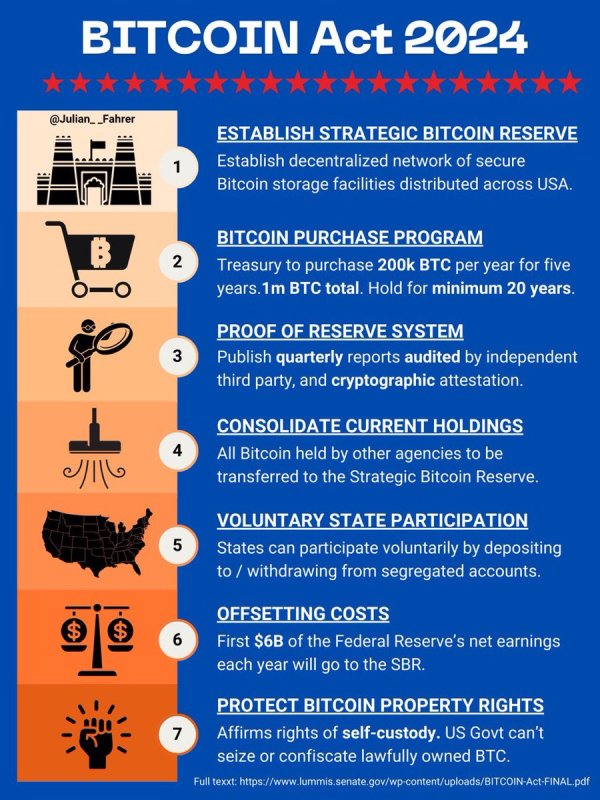In this week’s crypto highlights, we explore the price movements of BTC, AVAX, LDO, and INJ. Additionally, this recap includes other notable industry news items that occurred over the last seven days. Without further ado, let’s dive into the latest market developments.
Noteworthy market events
U.S. Treasury warns of illicit finance risks in DeFi, encourages regulation
The U.S. Treasury Department published a 42-page report, detailing risks associated with decentralized finance (DeFi). This is considered the first risk assessment of the space ever undertaken by the U.S. government.
In the past, regulators typically “rewarded” centralized platforms with their attention, but now they have their eyes set on DeFi. Is this an “everyone stays calm, it’s happening” situation? Although there aren’t any new policies coming into immediate effect, the report could serve as a call to action for regulators. Here are a key few statements from its contents:
- The Treasury Department said thieves, scammers, ransomware cyber criminals, and actors for the Democratic People’s Republic of Korea (DPRK) are using DeFi to launder proceeds from crime.
- According to the report, DeFi services are not following anti-money laundering (AML) or countering the financing of terrorism (CFT) laws.
- The Treasury suggested the U.S. government should consider strengthening regulations for DeFi services.
Ethereum projects launched a solution to protect users from MEV attacks
More than 30 Ethereum-based projects have joined forces to shield the network against exploits, launching MEV Blocker. According to developers, the solution provides users with a free endpoint that “pays” users for MEV protection “in a wide variety of DeFi, NFT, and dApps.”
For those first learning about MEV attacks, and want to understand why the concept is important, here is our condensed explanation, or CEXplanation:
Maximal extractable value (MEV) is a trick that so-called “searchers” use to take advantage of pending transactions before they’re confirmed on the blockchain.
Typical MEV attacks are front- and backrunning. The first occurs when specific bots “frontrun” trades made by users on decentralized exchanges (DEXs). The second is dedicated to cleaning up residual effects of the trade, allowing attackers to keep potential profits for themselves.
When these two methods are combined, it’s called a “sandwich attack,” which is considered the most harmful form of MEV for potential victims. In 2022, MEV searchers generated $128 million from sandwich attacks.
SushiSwap reported a vulnerability in the platform’s smart contract
On April 9, The SushiSwap team discovered a vulnerability in the RouteProcessor2 smart contract, which is used to route trades on their decentralized exchange. The Head Chef of SushiSwap, Jared Gray, recommended revoking approvals on all blockchains. According to PeckShield, this exploit led to a loss of at least $3.3 million.
The same day, DeFiLlama highlighted that the vulnerability only affected addresses that used SushiSwap over the “last four days.” The project also published a list of contracts whose approvals need to be revoked.
1inch co-founder Anton Bukov said that the attack was performed through a “fake Uniswap v3 pool” (using the SushiSwap router), which did not perform authentication checks.
Winklevoss twins arguably lent their crypto platform, Gemini, $100 million
Bloomberg reported that Tyler and Cameron Winklevoss, co-founders of the Gemini crypto exchange, recently lent the platform $100 million to support the business amid a market downturn. According to the outlet, the brothers provided the loan after trying to secure outside investment for Gemini.
Notably, the $100 million figure stands out because it’s equal to the amount Gemini agreed to give some of its customers as part of the Genesis bankruptcy case resolution. However, it is unclear whether this loan is specifically related to the Gemini Earn situation.
One sentence news
- On April 12, Ethereum’s Shapella update was successfully activated in the mainnet, empowering users to withdraw staked ETH.
- According to the Wall Street Journal, Binance.US is still searching for Waldo… sorry, a banking partner for its customers’ cash, as banks are afraid of potential regulatory risks associated with the platform.
- Mt.Gox Trustee Nobuaki Kobayashi announced the beginning of compensation payments that will take place through October 31, 2023.
- OpenSea launched its Pro platform, a new NFT marketplace based on Gem v2 aggregator.
Bitcoin is flirting with the $30,000 level
Happy $30,000, everyone. Taking an upward step from $28,500, Bitcoin reached the point it last experienced 10 months ago. So what now? New bull market? Bulls will run the streets like during the festival of San Fermin in Spain, right? Not so fast, toro.
There are fundamental indicators that could support this reading. For instance, the Bitcoin aSORP metric, which gauges investor sentiment, surged above 1.0 for the first time in over a year. When the same thing happened in 2015 and 2019, the Bitcoin price moved up by more than 100% in less than a year, highlighting the end of a bear market.
In addition, BTC dominance increased from 39% to 47% thus far into the year, indicating that either more crypto enthusiasts rebalanced their portfolios in favor of Bitcoin, or that more institutional investors entered the market as they have fewer investment tools for altcoins.
The U.S. consumer price index (CPI) data declined in March to 5%, exceeding expectations. This development could also support bullish momentum, as it may increase investors’ risk appetite.
Long-term technical analysis is also supporting a bullish narrative. As we mentioned last week, Bitcoin broke the 50-week SMA, which previously indicated the end of the bear market. This time Bitcoin also moved above the monthly downtrend line, as in previous cycles.
Although Bitcoin’s halving is still a year away, it is possible that some investors could begin to anticipate its effects on the market. This could potentially increase buying pressure as investors may switch to asset accumulation, preparing for the next theoretical bull run.
But for all this bullish talk, lower timeframes indicate that Bitcoin may experience a slight correction. Bitcoin completed the ascending triangle formation (white lines), and has already reached the pattern’s price target (cyan lines).
At the time of this writing, the asset is consolidating near $30,000, approaching the middle of the Bollinger channel on a four-hour chart. If the asset manages to sustain above this level, the next potential target could be $31,600. If failed, this could fuel a correction, pushing the asset to retest the $28,500-$28,700 support area. The asset moved out of the overbought zone in this timeframe, but MACD lines made a bearish crossover (blue circle).
AVAX could be inside a rising wedge
Avalanche is preparing for a third major upgrade called Cortina. It has already been successfully activated on the Fuji testnet before its release on the mainnet. The upgrade will introduce several new features and improvements to the Avalanche protocol, including:
- more straightforward ways for exchanges to support Avalanche’s X-Chain
- a new Validator Subnet Governance mechanism
- new developer tools to build applications on Avalanche
In addition, Avalanche released the “Evergreen Subnets” solution for financial institutions. With this feature, firms will be able to launch their own subnets for research and development, and for “production-ready use cases.”
The upgrade anticipation could be one of the catalysts behind AVAX’s upward movement over the last month. However, the asset also experienced a gradual decrease in trading volume (white line). As a result, it could be inside a bearish pattern called a rising wedge (blue lines) with a price target near $14 (red line).
Recently, the AVAX volume almost doubled in a day, meaning the pattern formation could come to an end. But that’s considered unconfirmed until the price breaks the lower border of the wedge. If this happens, the closest support areas could be $17.5 and $16.75.
Alternatively, if the asset breaks the resistance area near $18.6, and jumps above $20, this could invalidate the bearish view.
LDO moved down amid delayed ETH withdrawals
Ethereum’s Shapella update was one of the major drivers of the recent LDO rally. However, as the Ethereum network came closer to the hardfork, the LDO price started to lose its bullish momentum.
On April 6, it was announced that Lido stakers can expect ETH withdrawals “no sooner than early May,” as the platform needs to complete security audits of its v2 protocol. At the same time, Lido’s competitors — other liquid staking platforms — introduced this feature right after the Shapella launch on April 12. As a result, the LDO price became one of the top weekly decliners, among the top 100 cryptocurrencies by market cap.
Nevertheless, some indicators hint that increased bullish pressure may follow. The asset has already defended the 0.5 Fibonacci level twice. In addition, it broke the descending daily RSI line (white), while MACD is approaching the zero line.
If the asset sustains above $2.35, it could move to the $2.7 level, which corresponds to the 0.236 Fibonacci point. If failed, LDO may retest the 0.5 Fibonacci level for the third time.
INJ rally could be linked to the ecosystem increase
Injective has attracted considerable social media attention due to its over 400% positive price performance this year, and several airdrops from its native DeFi projects. Over the last few weeks, Injective announced multiple ecosystem updates and partnerships, including the launch of liquid staking with Stride, and introducing the first-ever Solana SVM rollup. As a result, INJ became one of the top performers with an over 25% price gain in a week.
However, the asset returned to the overbought zone, indicating that a price correction may follow. In addition, the MVRV indicator reached a selling area. The historical MVRV data shows holders will likely fix profits around the 42% zone, or $6.9. Notably, this is the level that the asset is currently trying to break.
If bulls fail to sustain above $6.9, this could push the asset to $5.9 and $4.9. If successful, the $7.58 could act as the next potential resistance level.
Tune in next week, and every week, for the latest CEX.IO crypto highlights. For more information, head over to the Exchange to check current prices, or stop by CEX.IO University to continue expanding your crypto knowledge.

You can get bonuses upto $100 FREE BONUS when you:
💰 Install these recommended apps:
💲 SocialGood - 100% Crypto Back on Everyday Shopping
💲 xPortal - The DeFi For The Next Billion
💲 CryptoTab Browser - Lightweight, fast, and ready to mine!
💰 Register on these recommended exchanges:
🟡 Binance🟡 Bitfinex🟡 Bitmart🟡 Bittrex🟡 Bitget
🟡 CoinEx🟡 Crypto.com🟡 Gate.io🟡 Huobi🟡 Kucoin.




















Comments